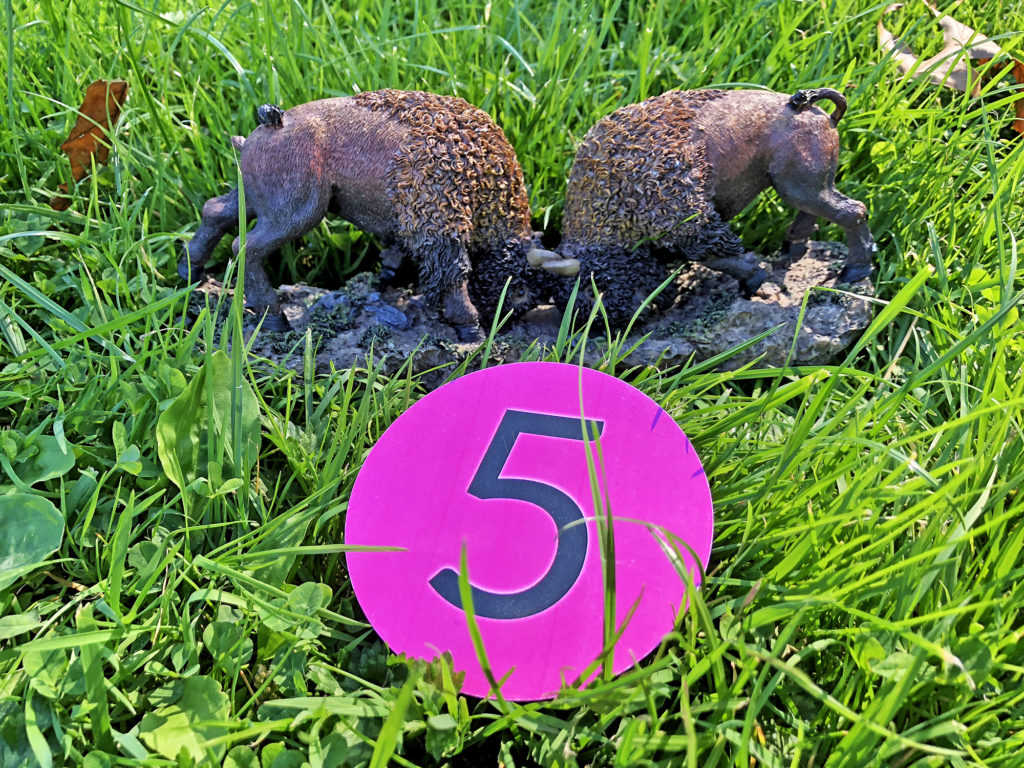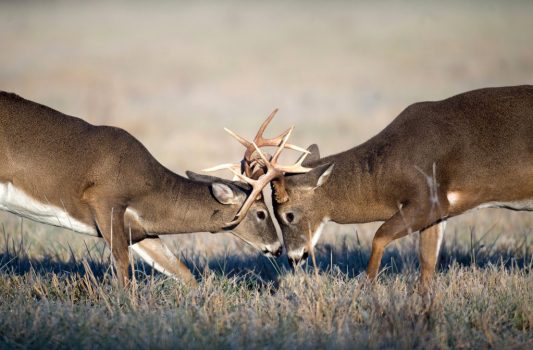
Sexual Selection
Sexual Selection
Animals compete with other individuals of their own sex for potential mates.
Learning Objective: Explain how animals may compete with other member of their sex within their species.


Natural selection indicates the survival of the fittest individuals within a species. Sexual selection is a more specific aspect of natural selection: individuals competing for success against individuals of the same sex within the species. For example, these male bucks are potentially competing with each other for available territory and mates.
This video introduces examples of sexual selection.
Watch this video; you can select the closed captioning “cc” option if you would like to see the text.
Fiddler Crab males display large claws to attract females and discourage male competitors. Claw size is in part due to inherited genes, as is the behavior to move the claw. Males with large claws and active waving are more likely to reproduce and pass on their alleles.
Pipefish males care for their young and females compete for the males.
These pipefish are native to Oregon coastal estuaries but are rarely observed by humans when they are camouflaged against submerged plants.
These Australian desert gobies (Chlamydogobius eremius) stay within sight of one another until they lay fertilized eggs in a small underwater cave. The male tends the eggs and will sometimes chase the female away. There are numerous paths to reproductive success.
Sexual Selection & Pair Bonding
Pair bonding can be an important way to share responsibility for raising offspring, improving reproductive success. Some animals pair for a breeding season, others pair for life. A contrasting strategy is to mate with as many individuals as possible to increase the chance of passing on alleles.
Black swans of Australia pair bond and remain monogamous over multiple breeding seasons. The parents share responsibility in raising offspring.
Sexual selection is on display in the spring at parks that have duck ponds. Young males and females communicate and display while forming new pairs. These videos were taken at the end of the breeding season, and the duck pairs have reintegrated into a larger group prior to their fall migration.
Successful reproduction is necessary for alleles to pass from one generation to the next. Individual organisms have to compete for available resources, including mates.











